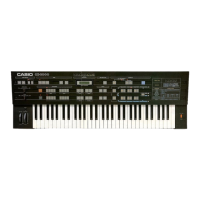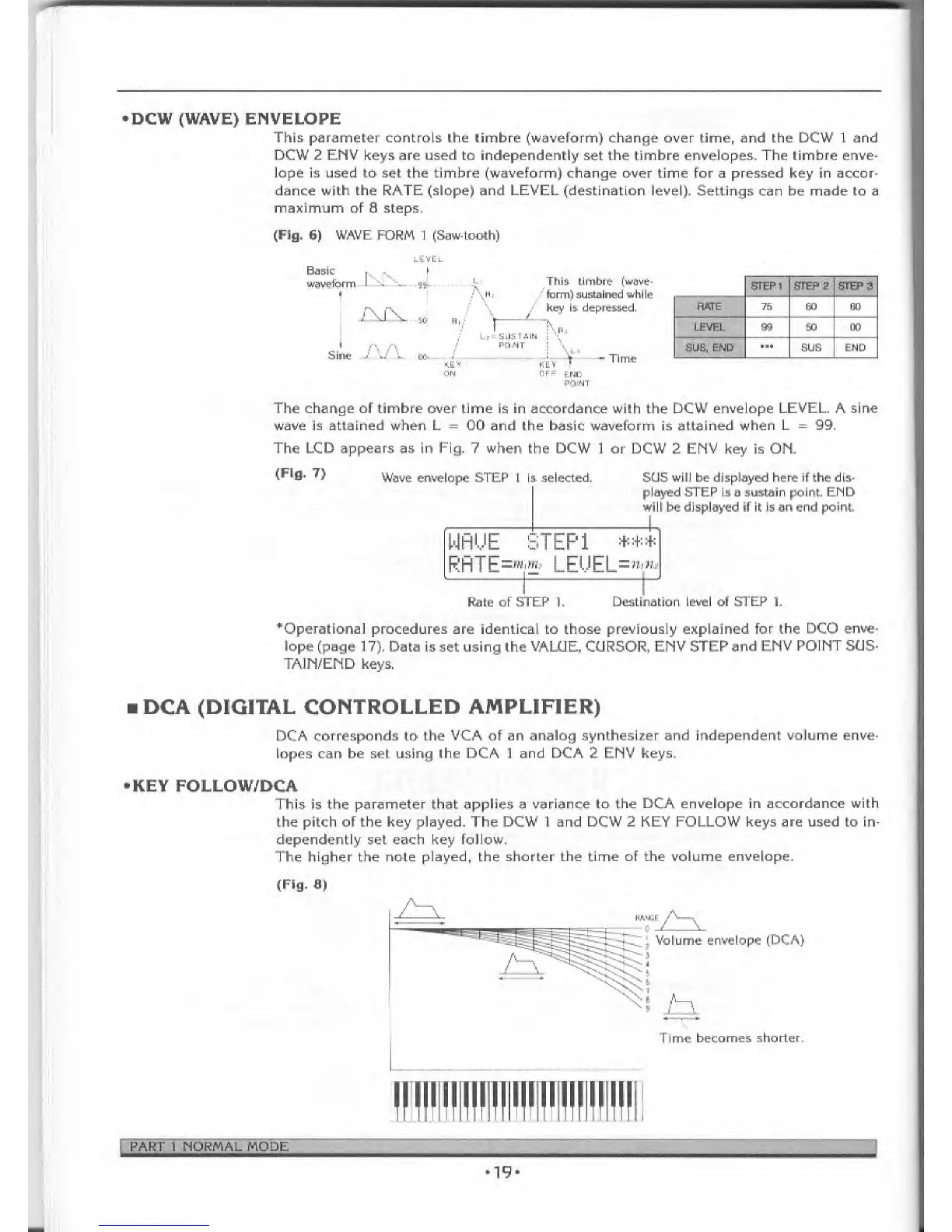DCW (WAVE) ENVELOPE
This parameter controls the timbre (waveform) change over time, and the DCW 1 and
DCW 2 EMV keys are used
to
independently
set the timbre envelopes. The timbre enve-
lope is used
to set the
timbre (waveform)
change
over
time for
a
pressed key in accor-
dance with the RATE (slope) and LEVEL (destination level). Settings
can be made to a
maximum of 8 steps,
(Fig,
6)
WAVE FORM 1 (Saw-tooth)
LEVEL
Basic
waveform
,_L;
A"'
I
\
ii,
*
This timbre (wave-
/ form)
sustained while
key Is
depressed.
Sim:
L*
=
SUSTAIN
PO*IT
,P«
CO
•:.£V
ON
KEY
P^
Timhj
STEP1 STEP 2 STEP
3
MAin 75
60
60
LEVEL 99 SO cc
SUS, END
***
sus END
OFF
END
POINT
The change of timbre over time is in accordance with the DCW envelope LEVEL. A
sine
wave is attained when L
=
00 and the basic waveform
is
attained when L
=
99.
The LCD appears as in Fig, 7 when the
DCW 1 or DCW 2 ENV key is ON.
(Fig.
7)
Wave envelope STEP 1 is selected. SGS will be
displayed
here if the dis-
played STEP
is a
sustain point. END
will be displayed if it is an end point
WfiUE STEP!
***
RHTE
=
m
'
m--
LE
UE
L
=
«
• n*
Rate of STEP 1, Destination
level of STEP 1.
'Operational
procedures are identical to those previously explained
for the
DCO enve-
lope
(page 1
7).
Data is set using the
VALUE,
CURSOR, ENV STEP
and EMV POINT SGS
TAIN/END
keys.
DCA
(DIGITAL
CONTROLLED AMPLIFIER)
DCA corresponds to the
VCA
of an
analog synthesizer and independent
volume enve-
lopes can be set using
the DCA
1
and DCA 2
EMV
keys,
KEY FOLLOW/DCA
This is the parameter that
applies
a
variance to the DCA envelope 3n
accordance with
the pitch of the key played. The DCW 1 and DCW 2 KEY FOLLOW keys are used to In-
dependently
set each
key
follow.
The higher the note played, the shorter the time of the volume
envelope,
(Fig.
8)
|..'V-|.:
I,
Volume
envelope
(DCA)
Time becomes shorter.
PART 1 NORMAL
MODE
19

